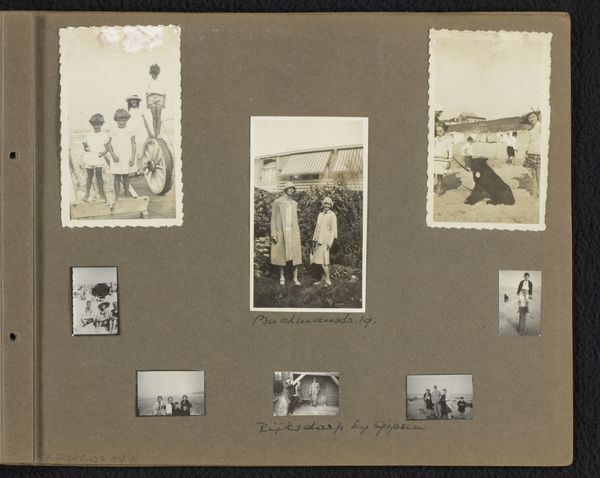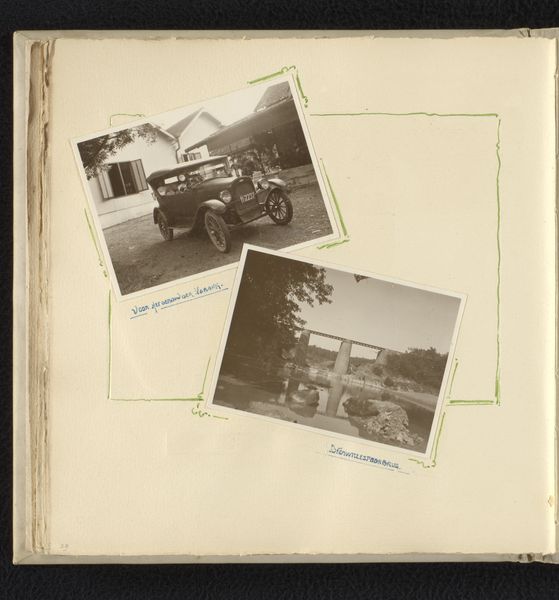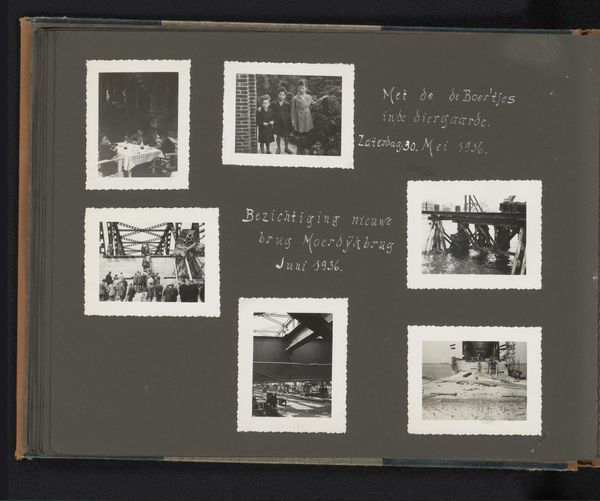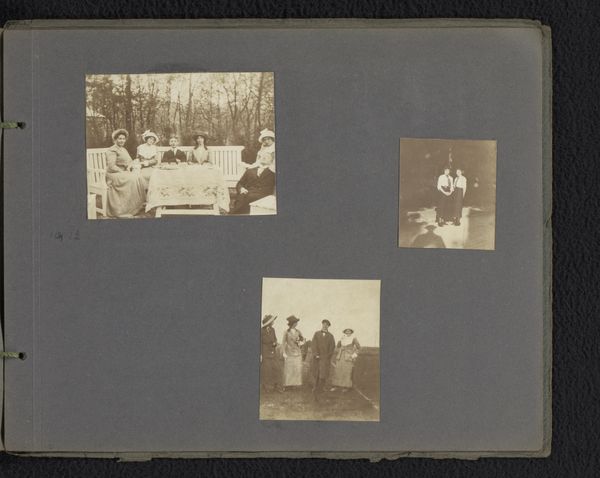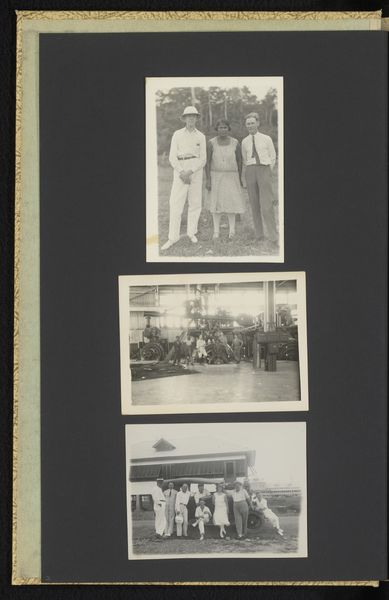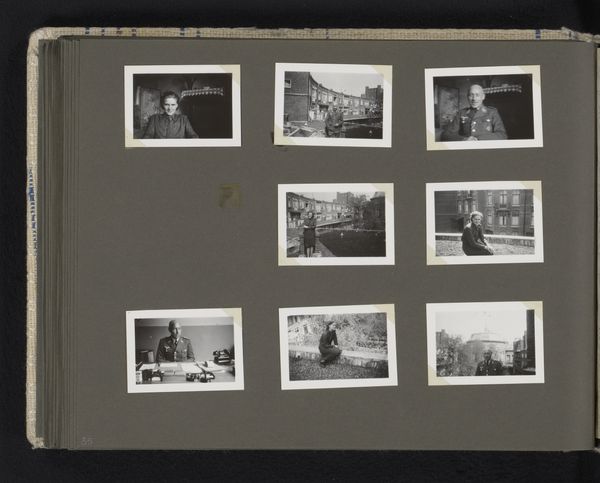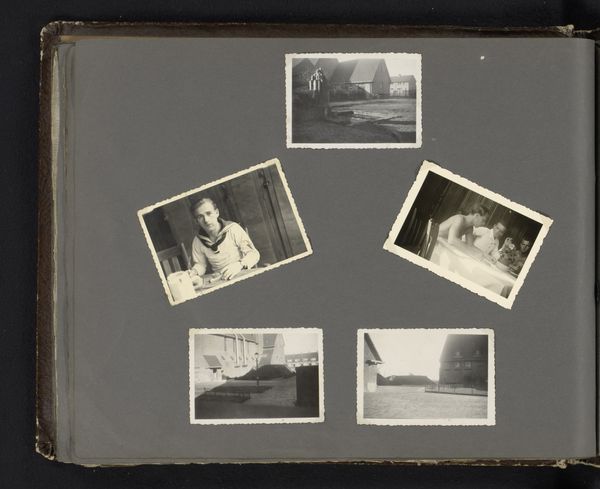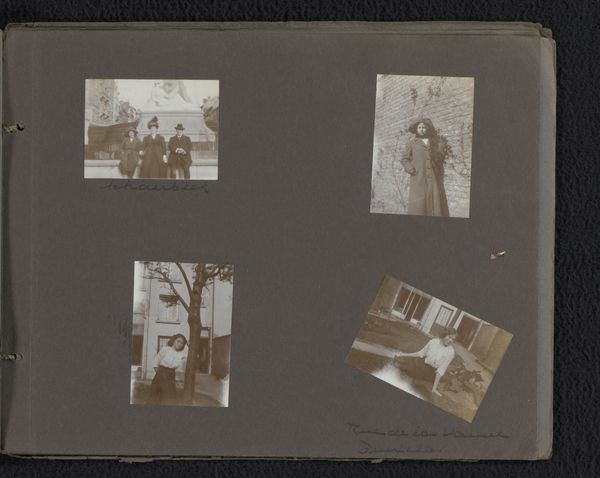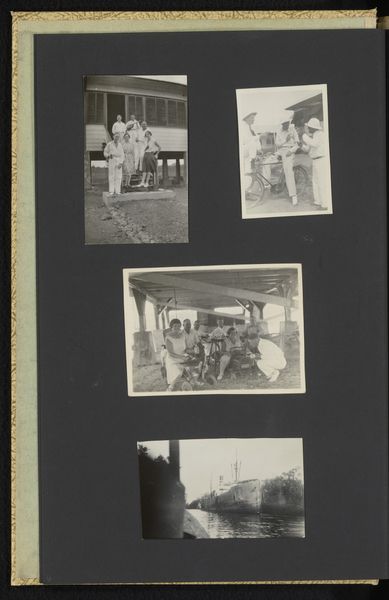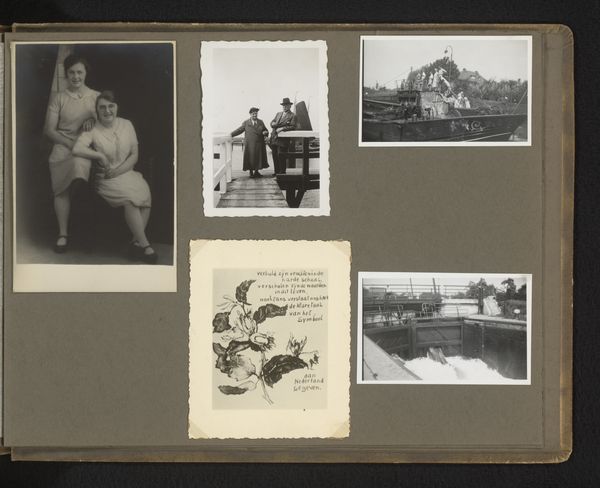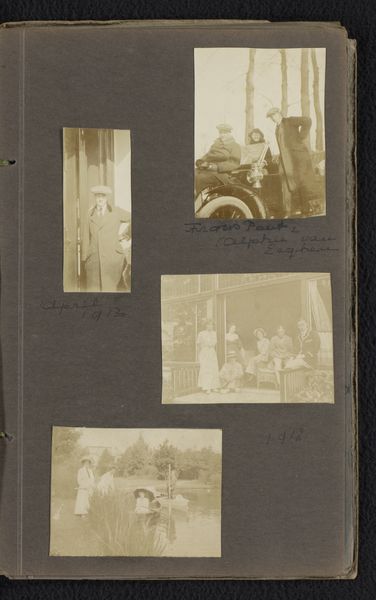
photography
#
portrait
#
art-deco
#
aged paper
#
still-life-photography
#
toned paper
#
homemade paper
#
ink paper printed
#
sketch book
#
landscape
#
photography
#
personal sketchbook
#
pen and pencil
#
sketchbook drawing
#
cityscape
#
storyboard and sketchbook work
#
sketchbook art
Dimensions: height 260 mm, width 325 mm
Copyright: Rijks Museum: Open Domain
Editor: This is a fascinating collection of snapshots in a sketchbook titled "Mensen bij een tennisbaan en een Renault," likely from 1928 to 1930 by Carolina Onnen. It’s all very sepia-toned, evoking a strong sense of nostalgia, like flipping through a family album. What do you see in this piece? Curator: I see a carefully constructed narrative. The artist, Onnen, is capturing a moment in time – a moment deeply entrenched in the burgeoning automobile culture and leisure activities of the late 1920s. But what kind of statement do you think that made at that time? Editor: I guess I hadn't thought about that… it's interesting to consider this snapshot as more than just a random selection of photos. I do see the juxtaposition of athletic activity with a car. It also seems gendered, with the athletic images showcasing male forms and the elegant couple being heterosexual. Curator: Exactly! Onnen, through the visual language of these photographs, seems to be commenting on class, gender, and the performative aspects of modern life. These seemingly disparate images - athletes, the smartly dressed couple, the car itself - come together as an observation on identity in the early twentieth century. Think about the societal shifts at play here: industrialization, increased leisure time, the changing roles of women. Does the composition, with its almost collage-like arrangement, also reinforce this theme of fragmented modern identity? Editor: It's interesting that you say that. The images, almost presented like evidence, force me to contemplate what it meant to occupy social roles at that specific point in time. I do appreciate you shining a light on these connections because otherwise, I may have considered the work only aesthetically pleasing. Curator: By considering its sociopolitical factors, the piece becomes so much more rich, allowing us to have important conversations. Editor: Indeed. I'll never look at family snapshots the same way again.
Comments
No comments
Be the first to comment and join the conversation on the ultimate creative platform.
